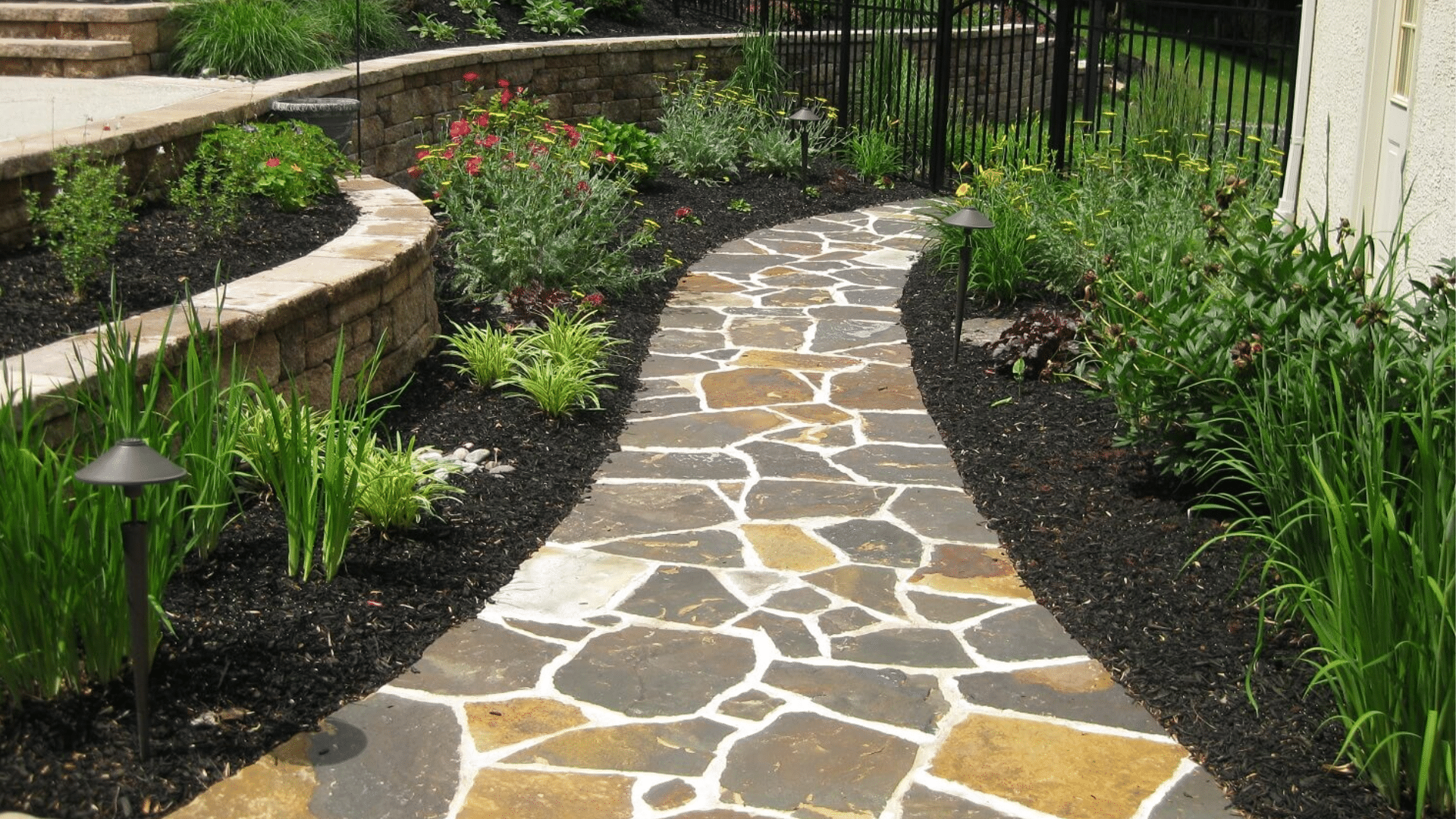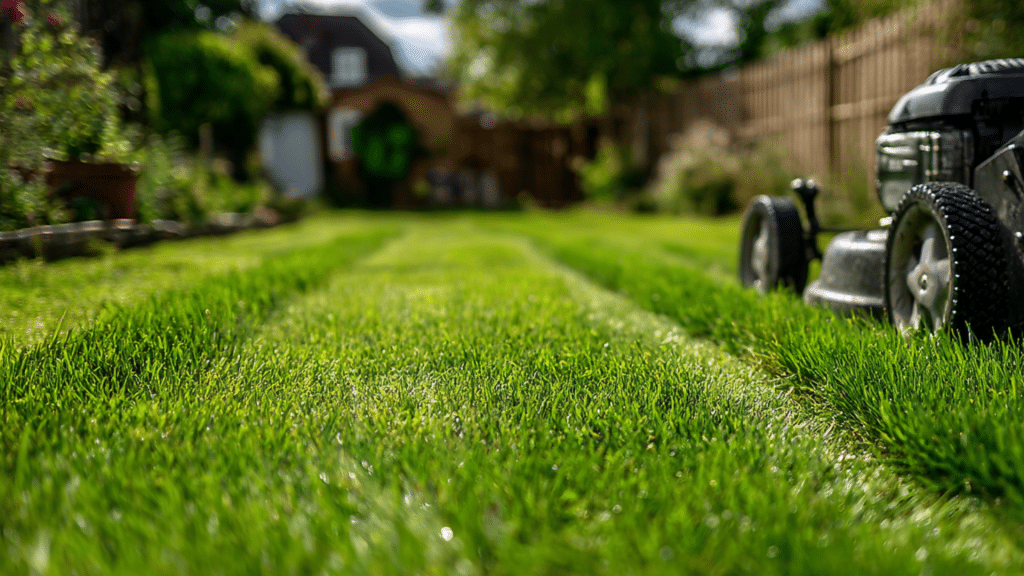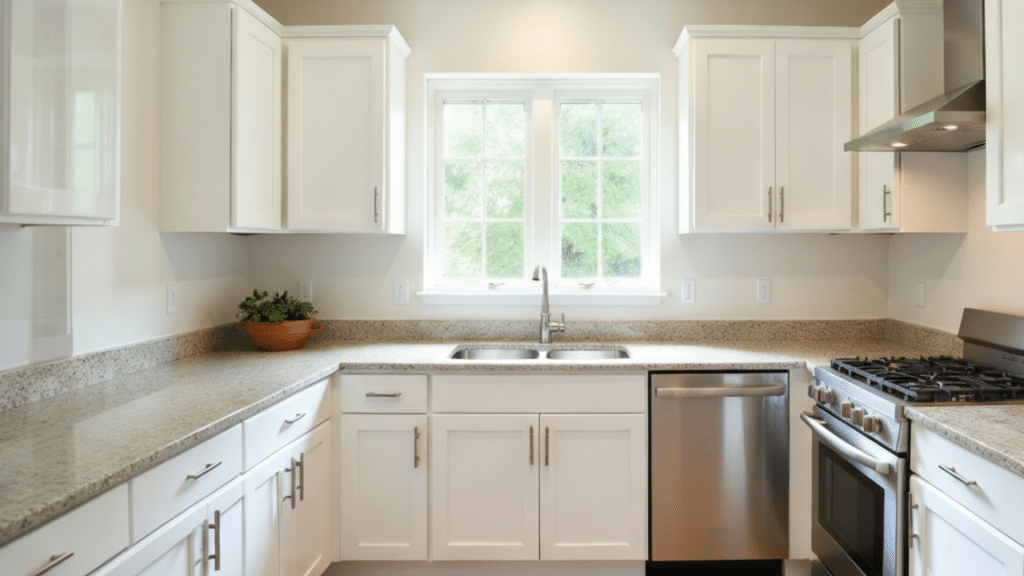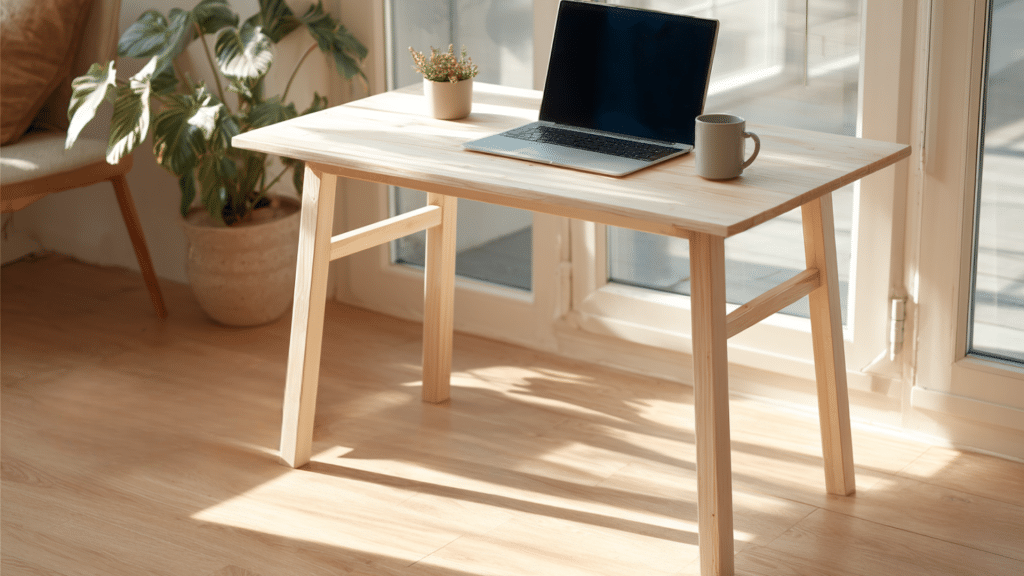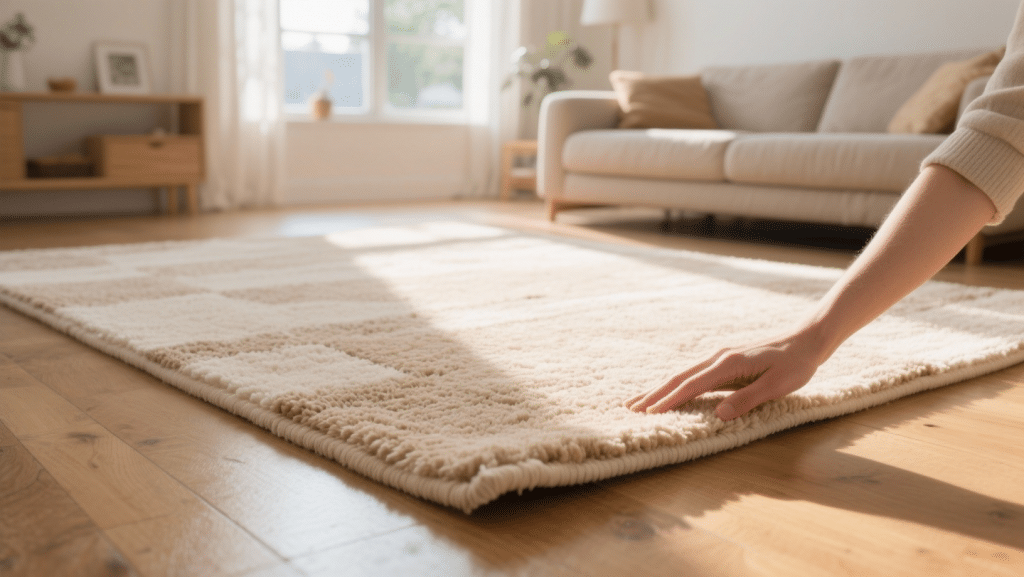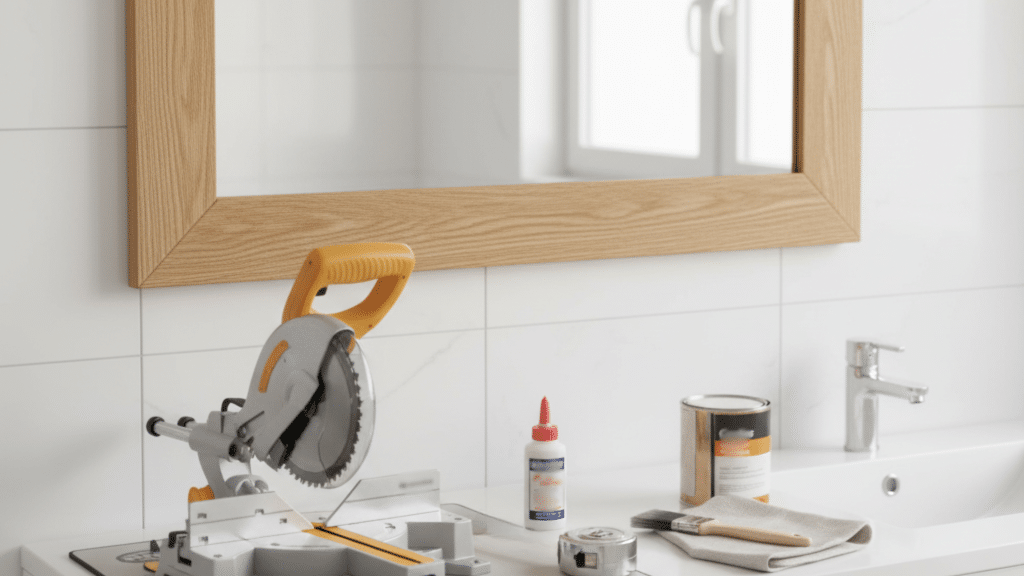What is Flagstone?
Flagstone is a flat, natural stone that people have used for thousands of years to build paths and walls. Ancient builders loved it because it naturally splits into thin, flat pieces.
This stone forms from sandstone mixed with minerals like feldspar and quartz.
Over millions of years, layers of sand pressed together to create these beautiful stones. People use flagstone everywhere today. You’ll see it in garden patios, walkways, and pool decks. Some homes even have flagstone roofs or indoor floors.
Each piece is distinct, featuring its own unique colors and patterns, making every project special and one-of-a-kind.
Advantages and Disadvantages
Flagstone offers unique benefits, as well as a few challenges.
The following is a table that highlights its main advantages and disadvantages to help you weigh both sides.
| Advantages | Disadvantages |
|---|---|
| Natural beauty | Heavy to move |
| Long-lasting | Uneven surface |
| Weather resistant | Skilled installation needed |
| Low maintenance | Weeds in gaps if unsealed |
| Slip-resistant | Can crack in cold |
| Adds home value | Colors may fade |
| Eco-friendly | Slippery when icy |
| Stays cool in heat | Rough on bare feet |
| Easy to repair | Can stain easily |
| Versatile uses | May settle if the base is weak |
Flagstone vs Slate vs Bluestone vs Pavers
Each stone has its own strengths, look, and cost. The following are the key differences between flagstone, slate, bluestone, and pavers to help you pick the right fit for your project:
Flagstone
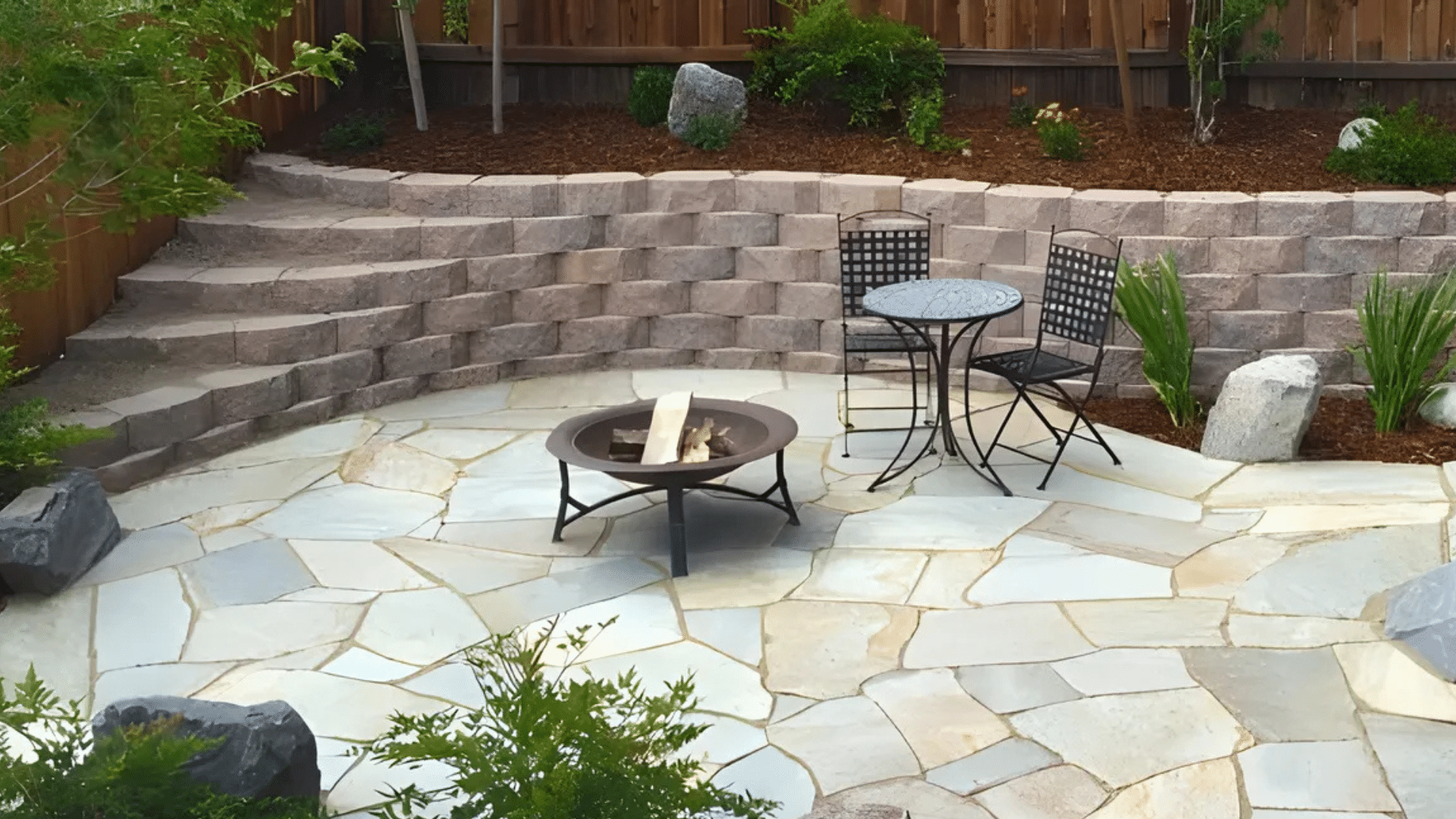
Historically used in Europe for centuries, flagstone comes from the Middle English word “flagge,” meaning turf or chip.
It refers to flat, layered sedimentary rock, most often sandstone, used in paving, patios, and walkways. Its irregular shapes create a rustic, natural look.
- Average cost: $15–$30 per square foot.
- Maintenance: Medium (sealing may be needed)
- Best for: Patios, walkways, rustic garden paths
Slate
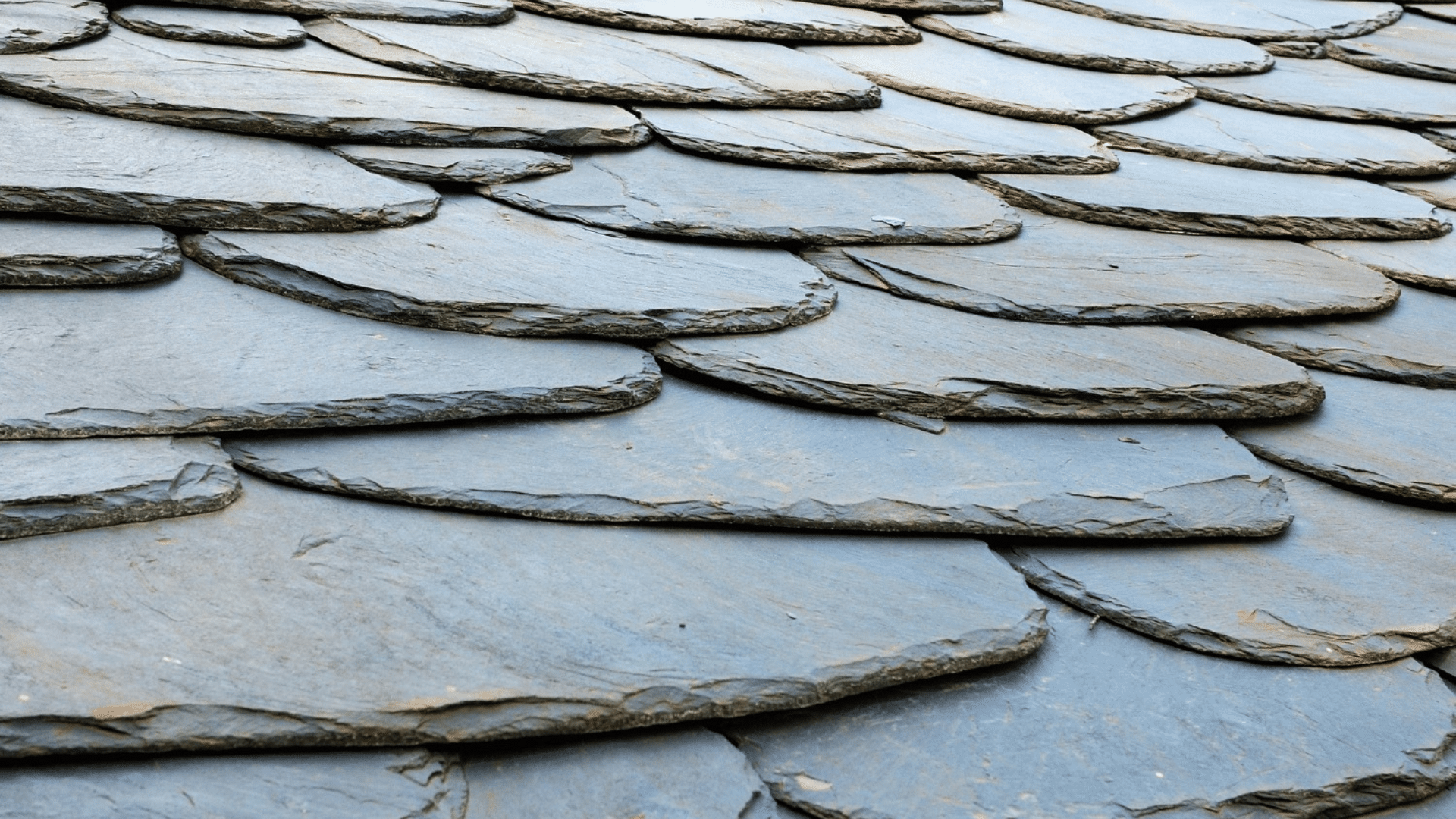
Originating from regions like Wales, Spain, and the northeastern US, slate has long been used for roofing and flooring due to its ability to split into thin sheets.
It is a metamorphic rock formed from shale, known for its fine-grained layers and refined appearance.
- Average cost: $20–$35 per square foot.
- Maintenance: Medium-High (requires sealing, can flake)
- Best for: Indoor floors, wall cladding, decorative spaces
Bluestone
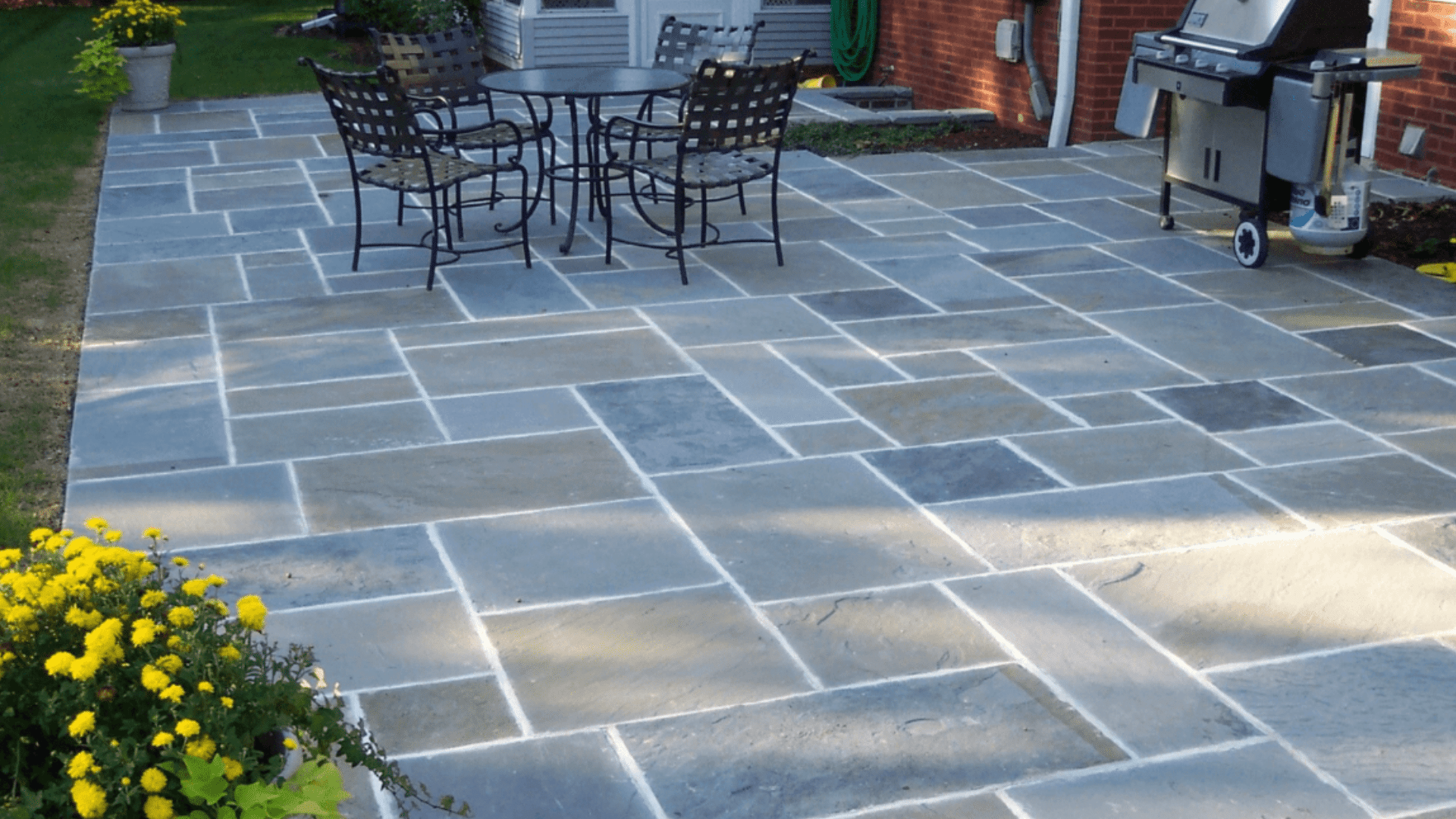
Bluestone was first quarried in the northeastern United States, particularly in Pennsylvania and New York, during the 1800s for use in sidewalks and city paving.
It’s a dense variety of sandstone or limestone, characterized by its blue-gray color and exceptional durability in harsh weather conditions.
- Average cost: $25–$50 per square foot.
- Maintenance: Low-Medium (may need sealing, heats up in the sun)
- Best for: Pool decks, premium patios, formal walkways
Pavers
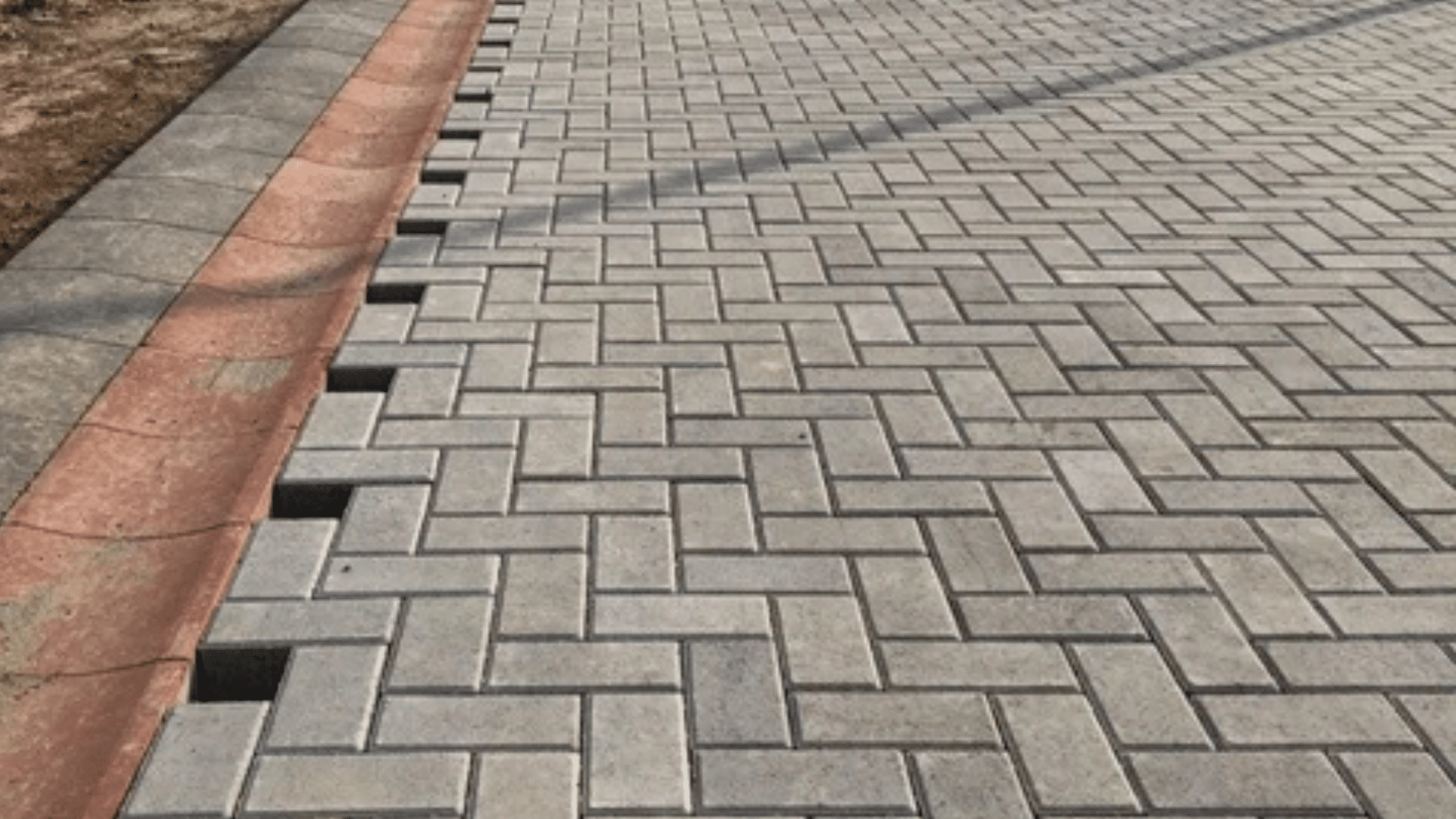
Pavers have their origins tracing back to ancient Rome, where interlocking stones were used to create durable roads.
Modern pavers are manufactured from concrete, clay brick, or cut stone, designed for uniformity and ease of installation. They’re practical, versatile, and widely used in landscaping.
- Average cost: $10–$25 per square foot.
- Maintenance: Low (easy to replace individual units)
- Best for: Driveways, formal patios, accessible walkways
How to Choose the Right Stone for Your Project
Choosing the right stone goes beyond appearance. Below are key factors, including climate, upkeep, cost, safety, and style, to help you make the best decision:
1. Climate & Weather Resistance:
Bluestone handles freeze-thaw cycles well, while sandstone stays cooler in hot climates. Local weather, rain, snow, or heat, directly impacts stone durability and comfort.
2. Maintenance Commitment:
Flagstone and slate often require sealing to prevent flaking and staining, as well as occasional cleaning. Bluestone is tougher but may benefit from sealing, while pavers are low-maintenance and easy to replace.
3. Budget & Installation Costs:
Flagstone and bluestone cost more because of weight, irregular shapes, and skilled labor needs. Slate falls mid-range, while pavers are budget-friendly and DIY-friendly, making them more cost-effective.
4. Safety & Accessibility:
Flat pavers are best for driveways, wheelchairs, and strollers, offering smooth accessibility. Flagstone provides natural traction but uneven surfaces; bluestone stays grippy even when wet.
Style & Design Goals:
Flagstone creates rustic charm, slate adds indoor elegance, and bluestone brings a premium feel. Pavers give a structured, modern look. Pick a stone that fits your home’s style and personality.
Affordable Ways to Maintain Flagstone
Keeping flagstone in good shape doesn’t have to be expensive. Below are some simple, affordable tips to maintain its natural beauty and durability over time:
- Regular sweeping: Prevents dirt, leaves, and debris from staining or scratching the surface.
- Wash with water: A garden hose or bucket of water is enough for routine cleaning.
- Mild soap solution: For stains, use dish soap and warm water instead of expensive cleaners.
- Weed control: Pull weeds by hand or sprinkle baking soda in gaps to keep growth down.
- DIY sealing: Apply a water-based stone sealer every few years to reduce cracking and staining.
- Avoid harsh chemicals: Skip bleach or strong acids, as they can damage stone and cost more in repairs.
- Quick spot fixes: Replace or reset only the broken stones instead of redoing the whole area.
Conclusion
After examining all these stones, I find that the choice becomes much clearer.
Flagstone stands out to me for its natural charm and flexibility, while slate, bluestone, and pavers each bring their own strengths.
Its rustic appeal, weather resistance, and manageable maintenance make it a great fit for many outdoor projects.
Which stone would you choose for your outdoor space? I’d love to hear your experience in the comments!

